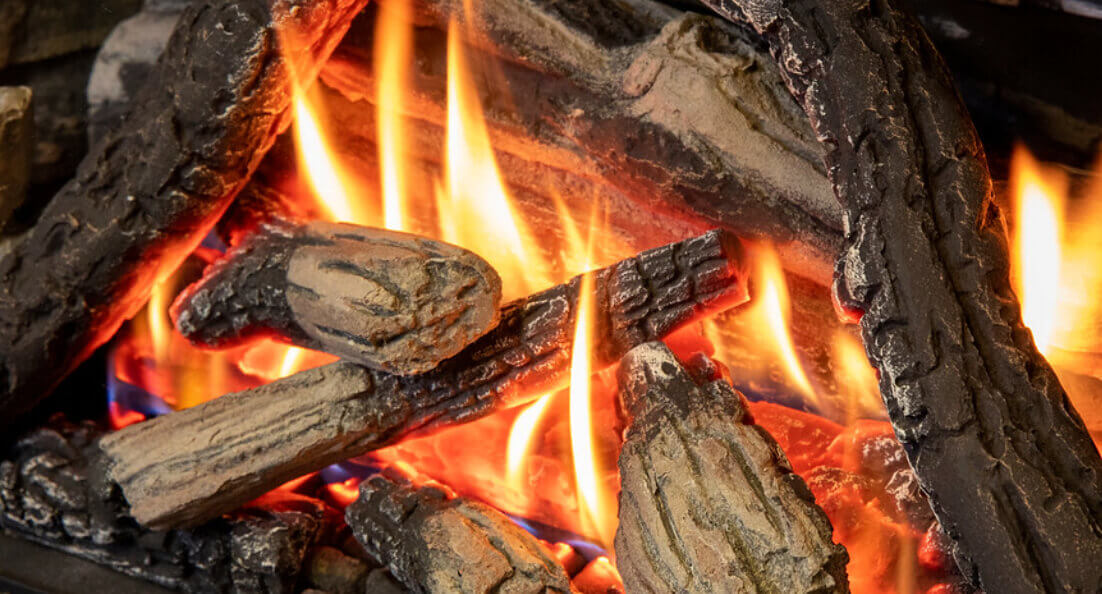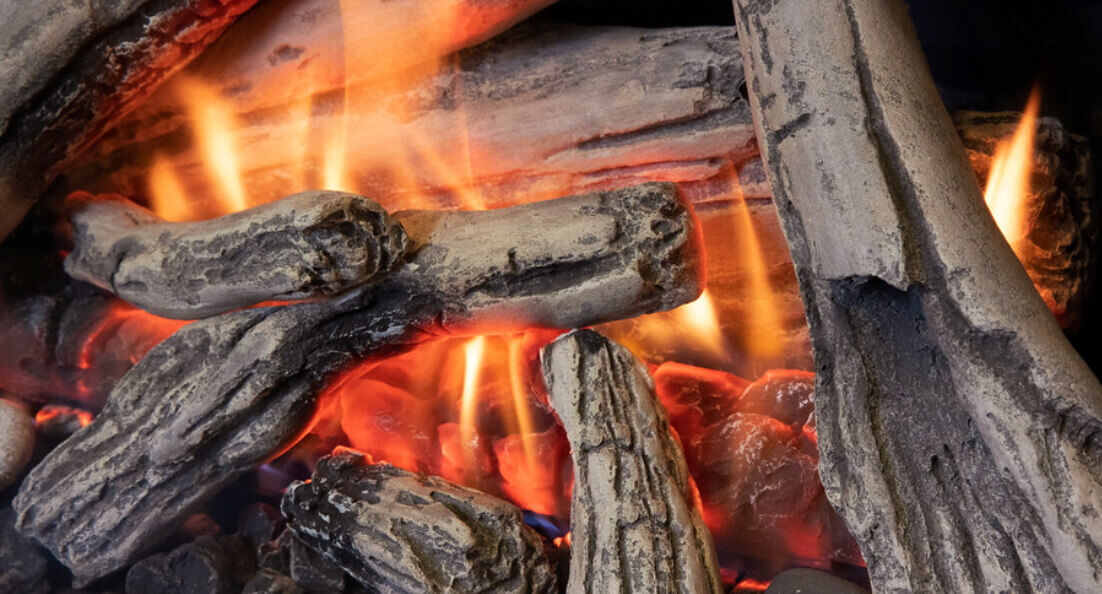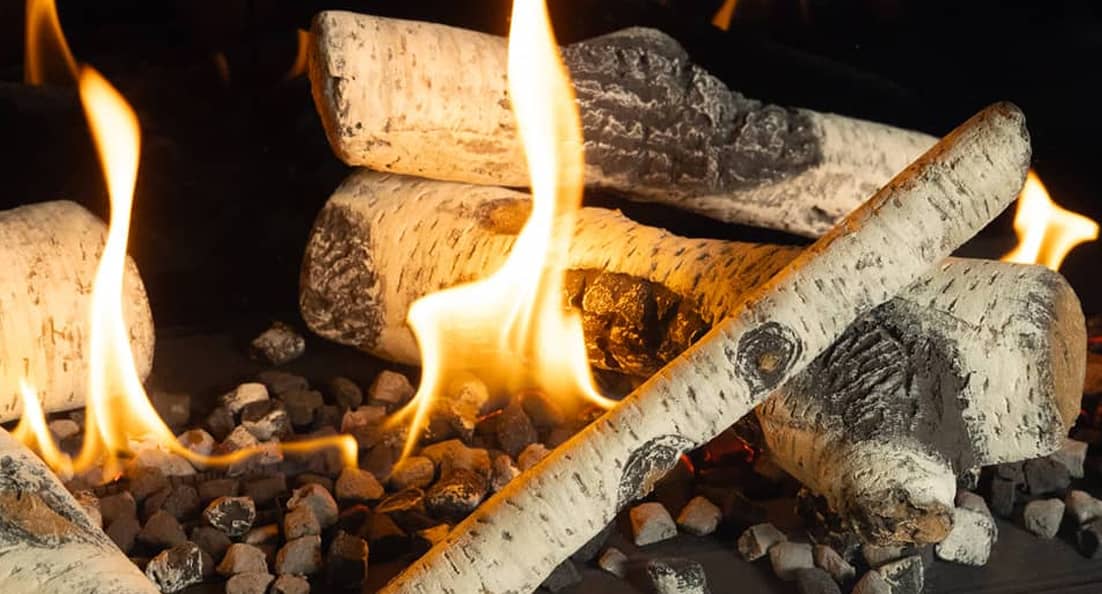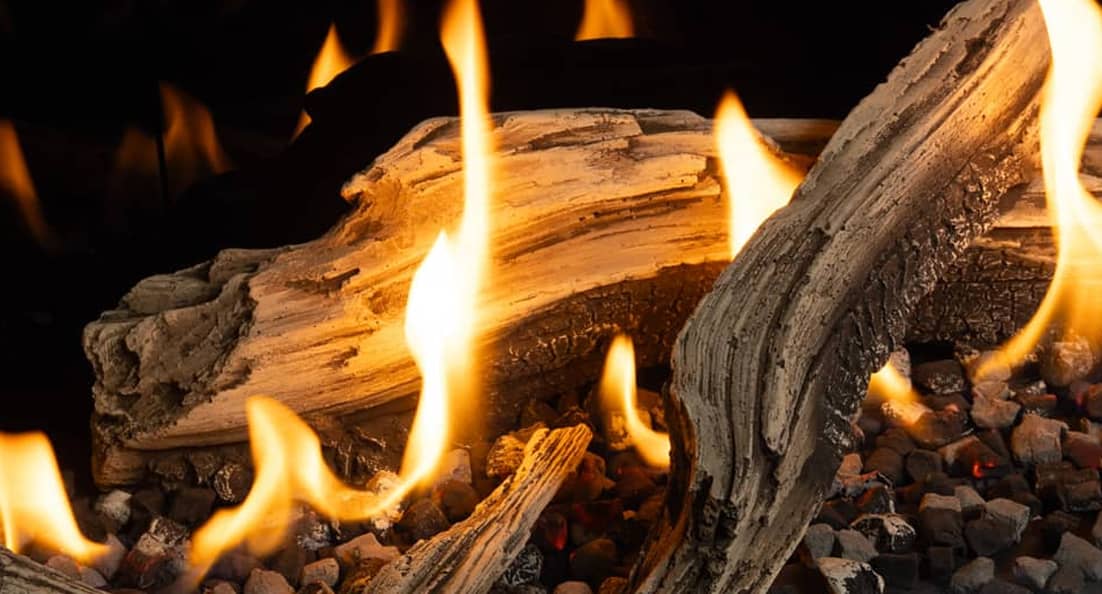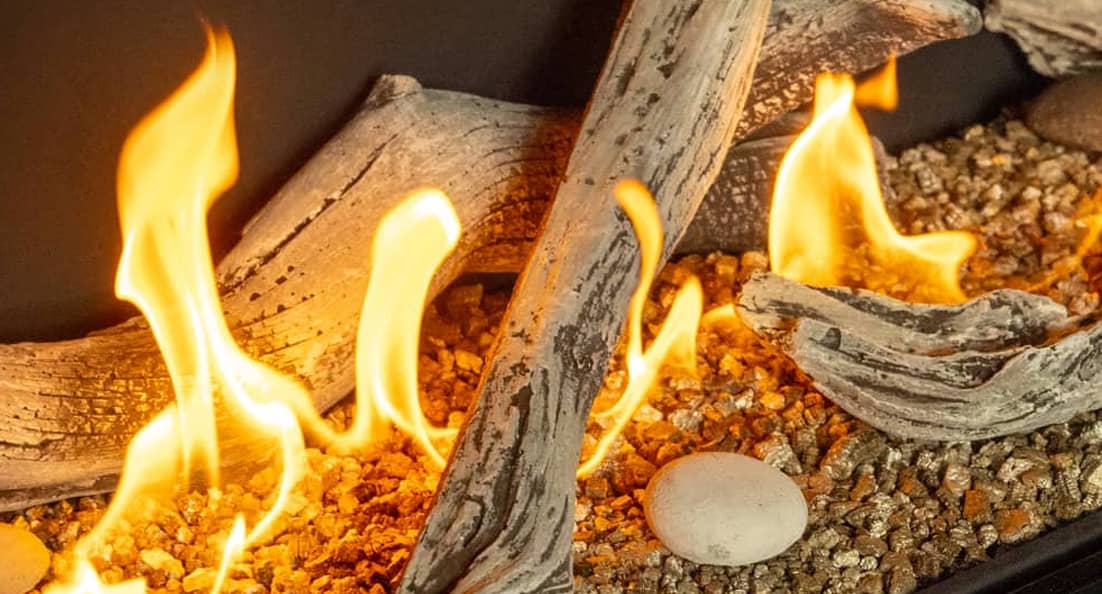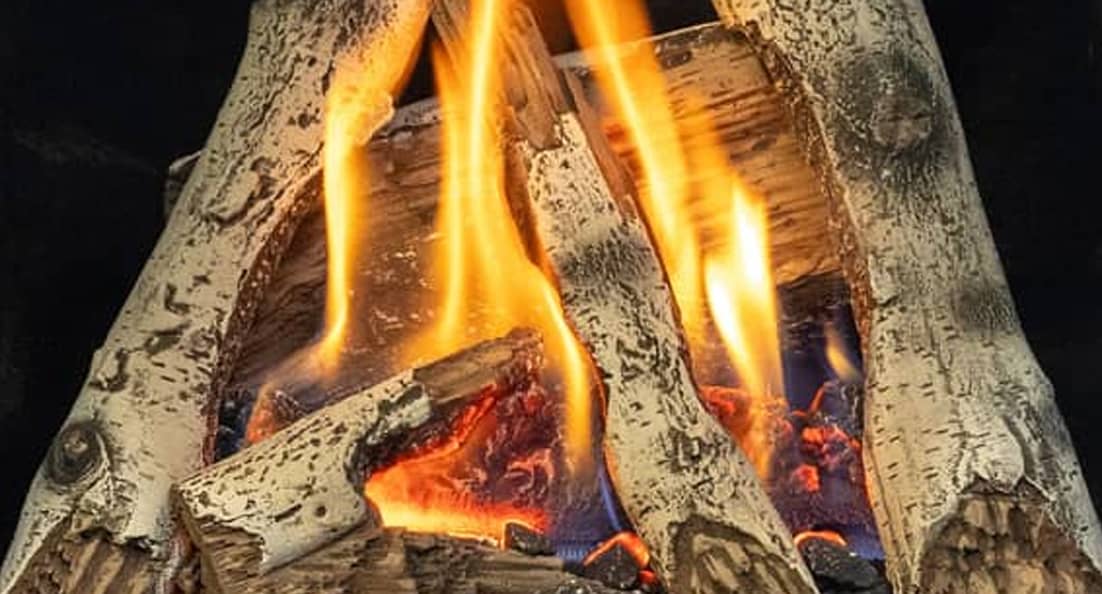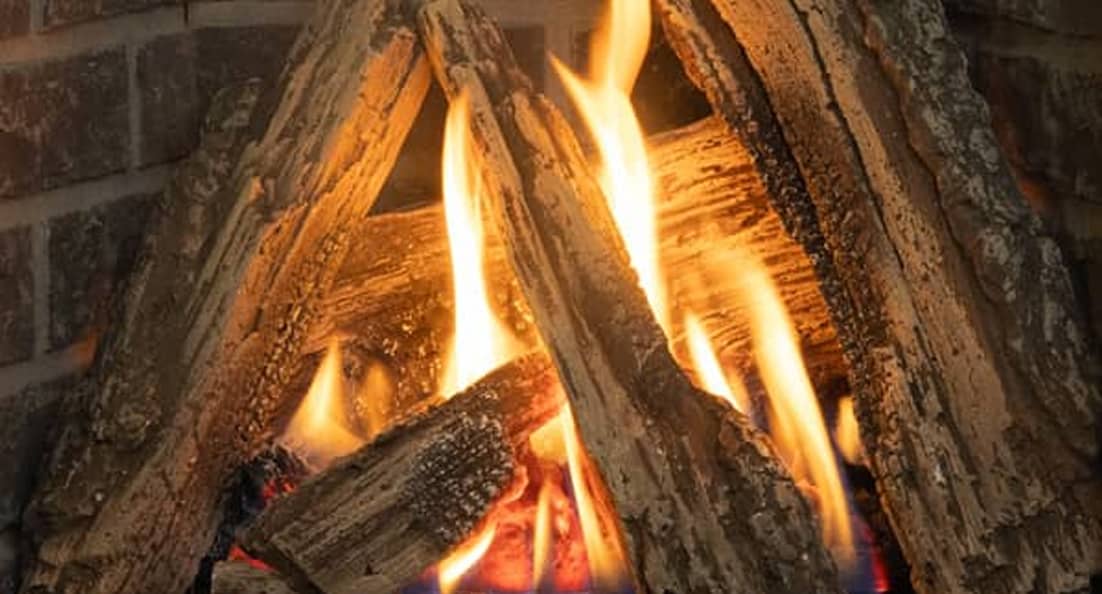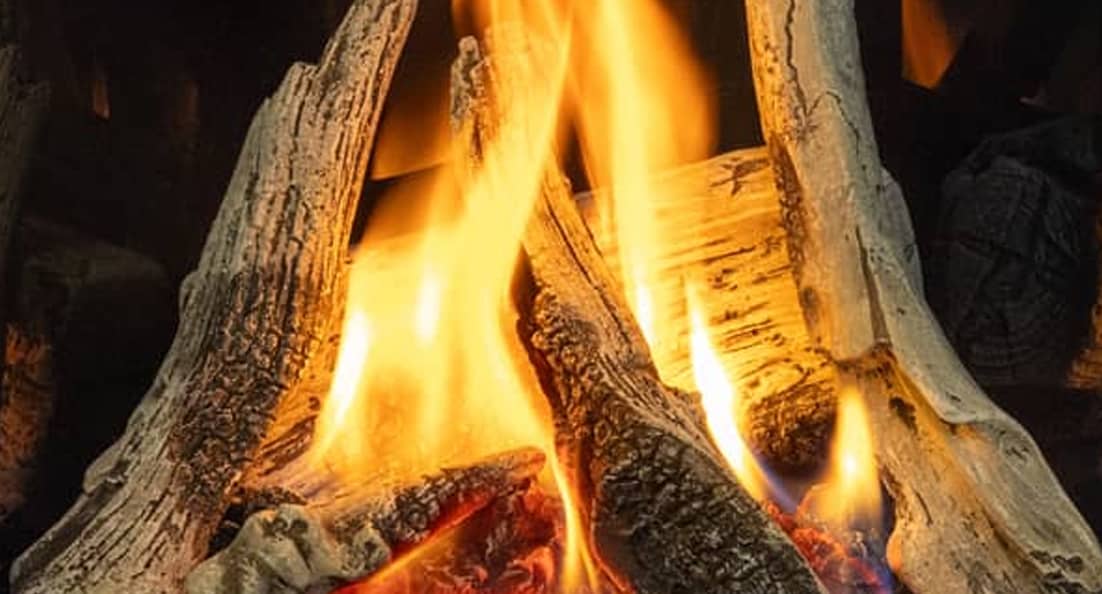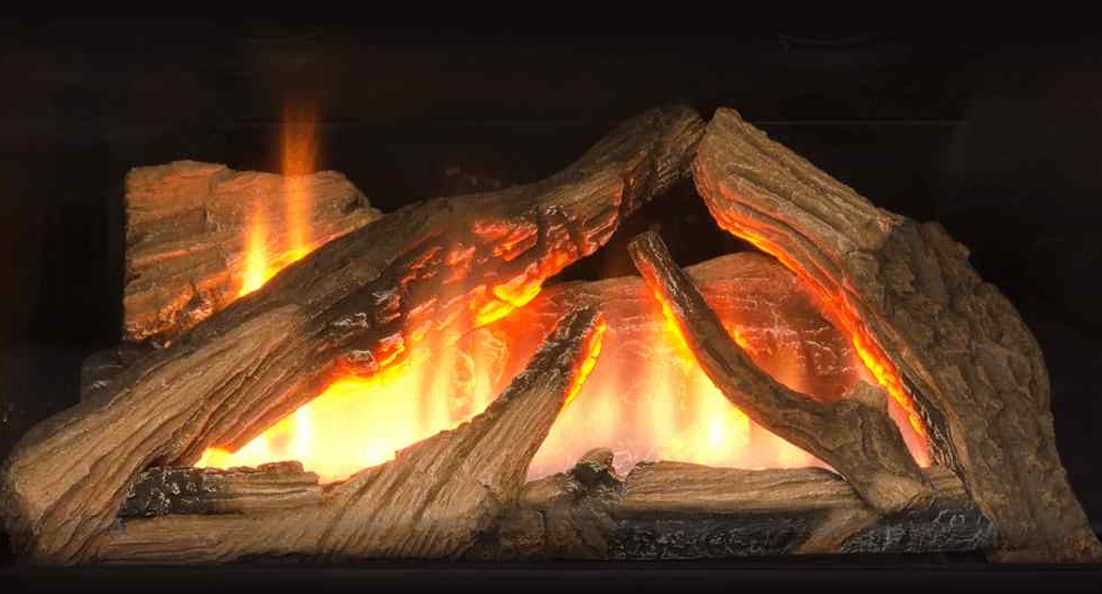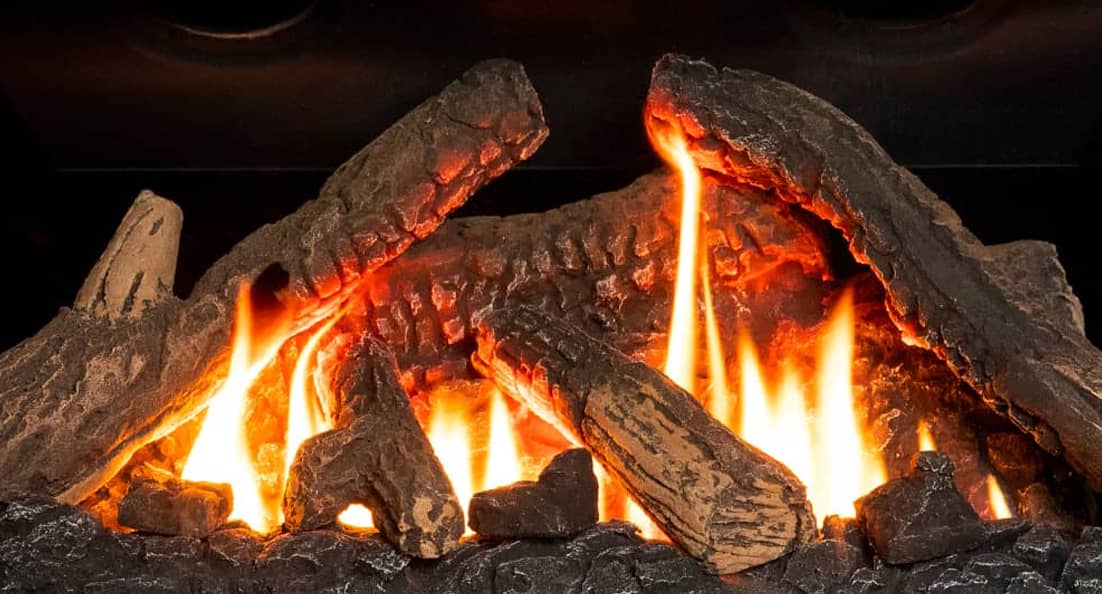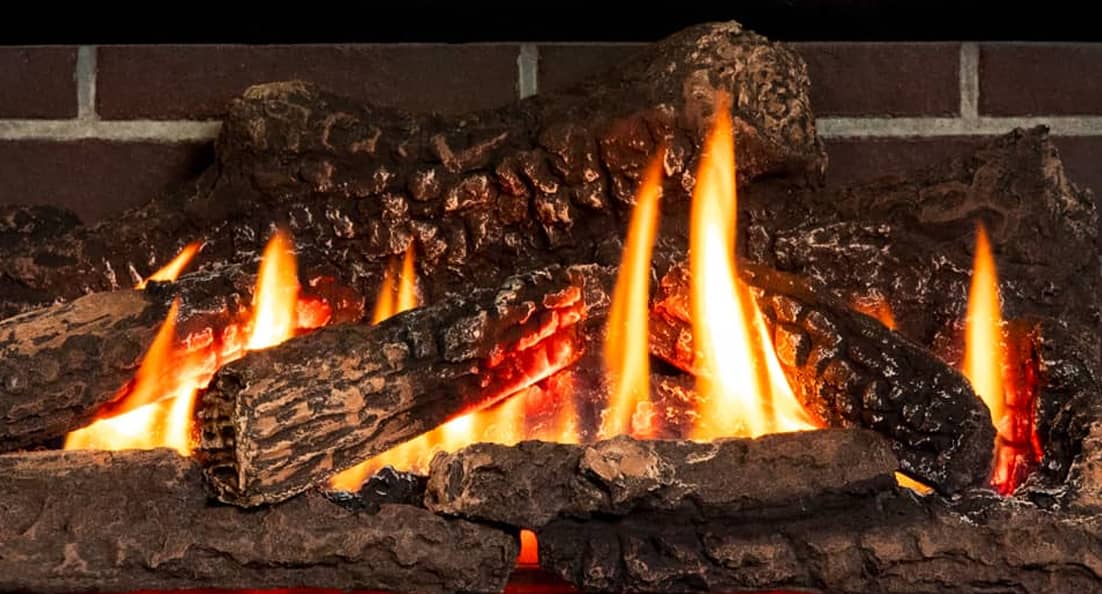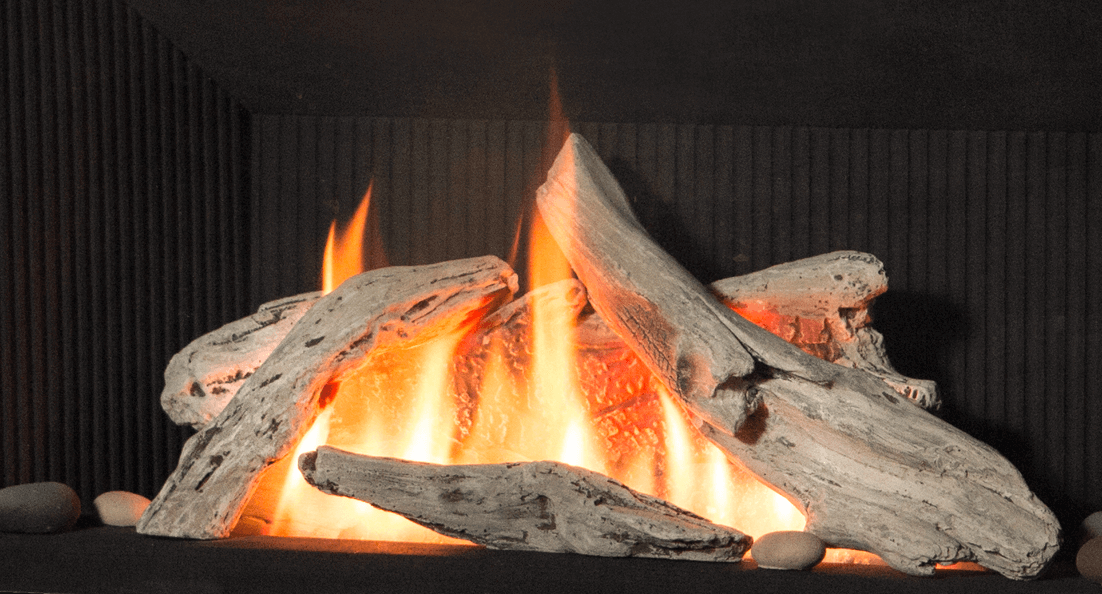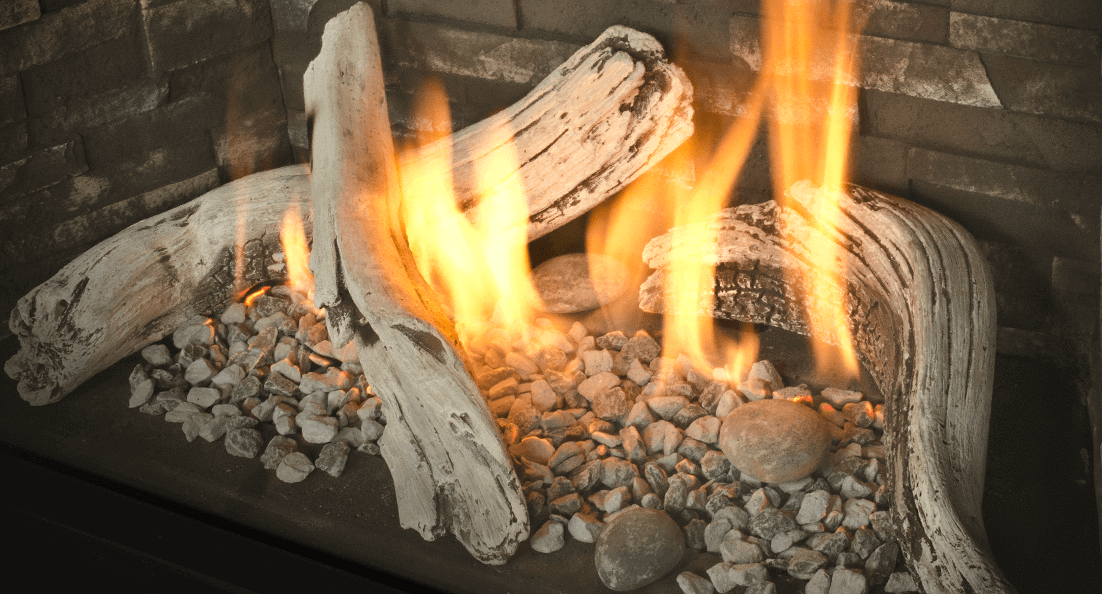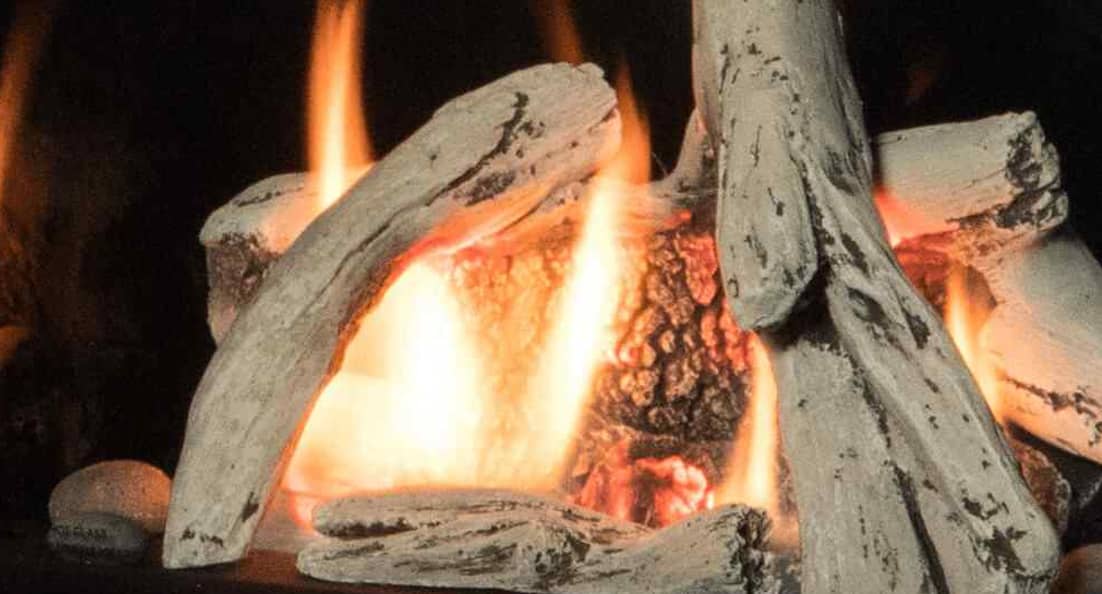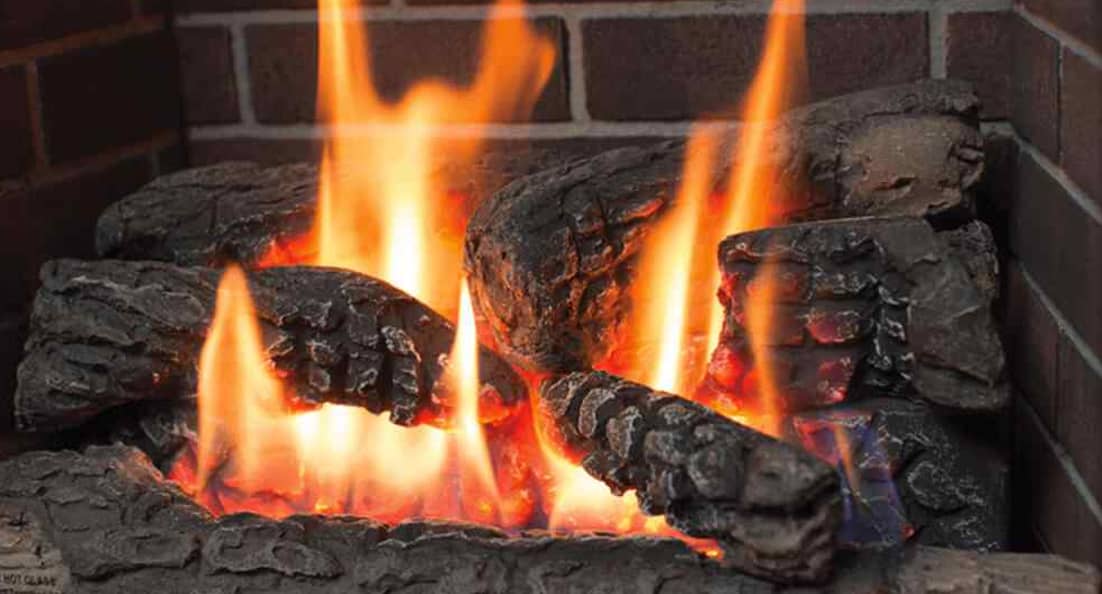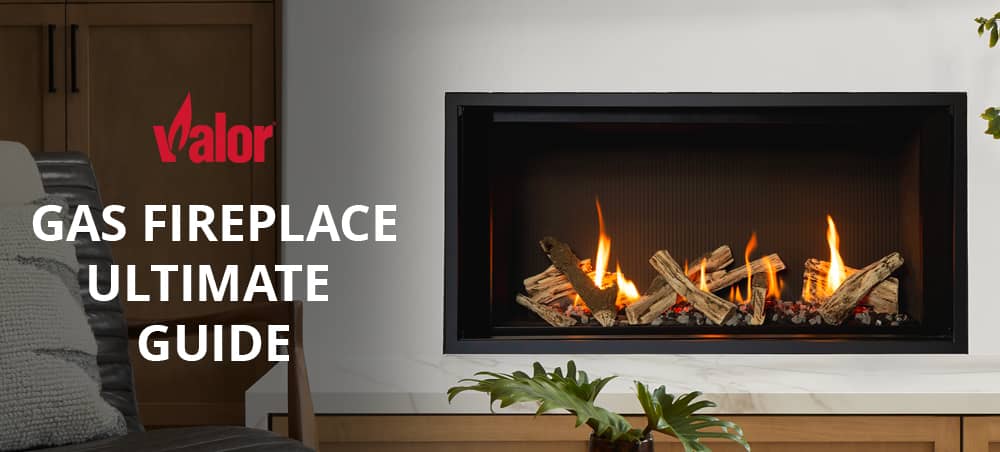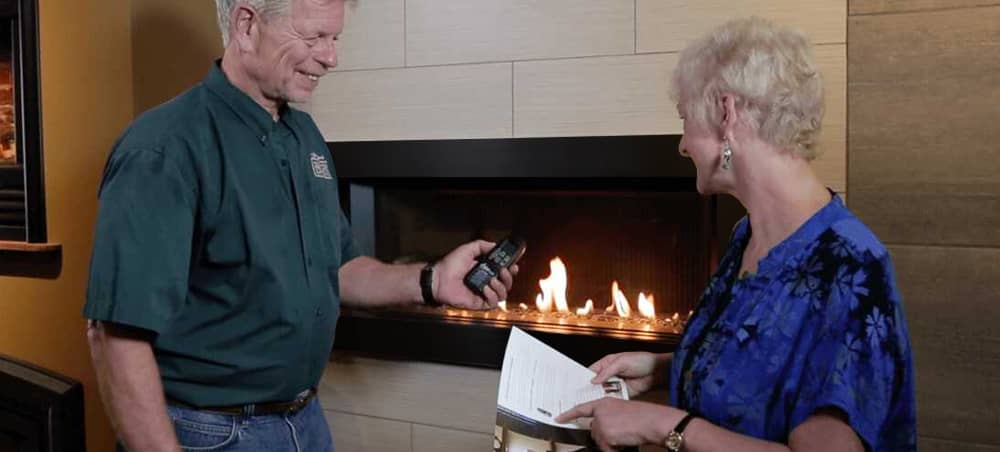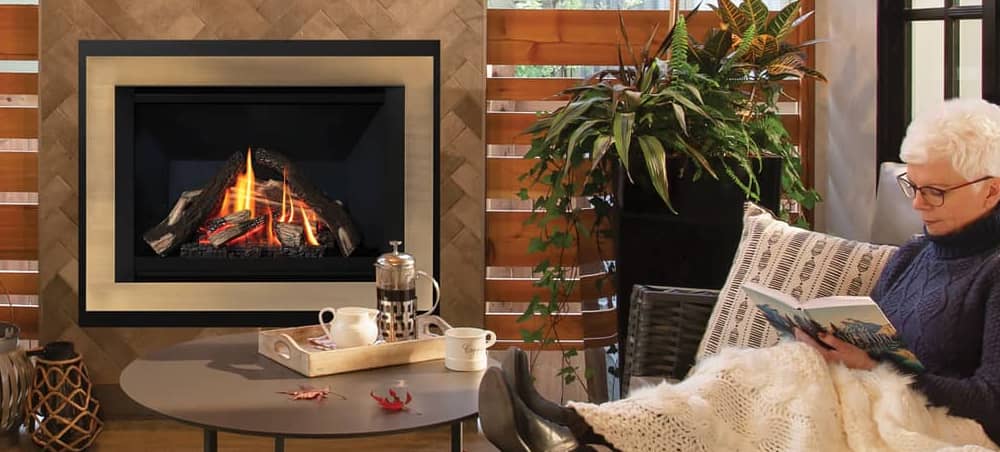Home > Fireplace Blog > How to Choose Gas Fireplace Logs
Gas fireplace logs are one of the primary visuals that catch the eye other than the flames or trim, so it's essential to research and choose the most suitable set of logs that match your style. Not only for looks, choosing the correct log set is essential to maximum heat outputs, cost, and efficiency of your gas fireplace.
Additionally, understanding how the ignition system and burner system work in your fireplace is crucial to ensure smooth and efficient operation.
Knowing that some gas fireplaces let you choose the log types is important. However, many manufacturers do not offer different materials. Instead, they provide different styles like birch, driftwood, and rocks. Be sure to check your options when looking at different suppliers.
The important thing to remember is to find gas fireplace logs that fit your needs. They should match your style and aesthetic preferences. This step-by-step guide will provide you with five key considerations when selecting a gas log set for your fireplace.
What Are Gas Fireplace Logs Made Of?
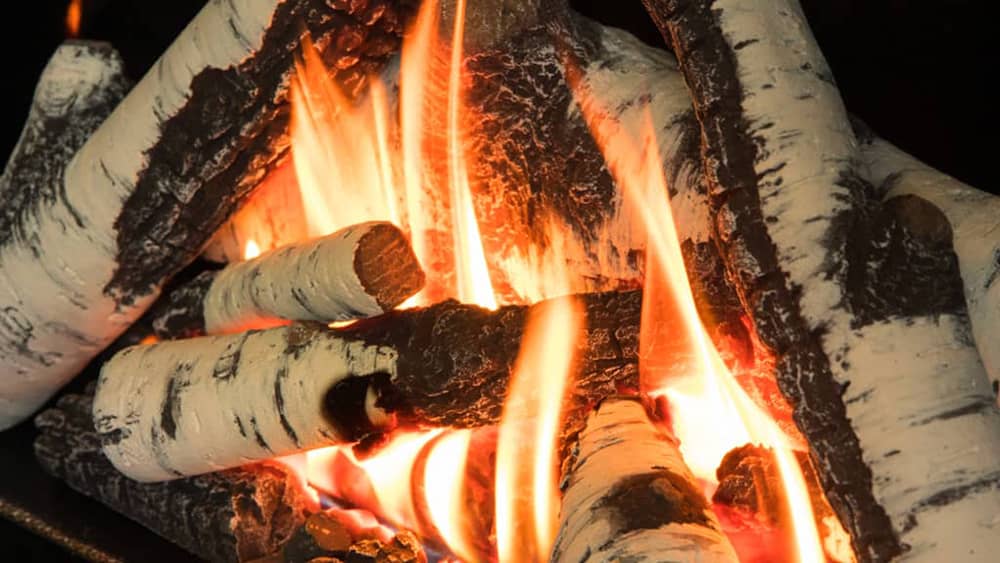
Gas fireplace logs are generally made of ceramic fiber, refractory ceramic, or refractory cement, all modeled to look like natural wood or materials. Each type of log material withstands high heat, with most log sets designed to last many years. The burner system is designed to work with these logs, distributing the flame evenly for both aesthetic appeal and efficient heating.
Factors To Consider When Choosing Gas Fireplace Logs
Types of Gas Fireplace Logs
When choosing logs for your gas fireplace, venting is a significant point to consider, as it can also affect the amount of heat outputted. Depending on your fireplace setup, you will need vented or ventless logs, and you'll want to choose the log set that works for your fireplace type
Vented Logs
For a more realistic fireplace experience, vented gas logs offer the best visuals. They closely resemble a real wood-burning fireplace with an enhanced glow throughout the logs. However, the downside is that vented logs lose some heat generated as they escape through the vent.
Ventless or Vent-Free Logs
For heat output, a vent-free log set won't lose heat through the venting system, and overall, you will find a better result in heating capacity and efficiency—ventless gas logs radiate heat into the area where they are placed.
* Please be aware that indoor ventless gas fireplaces cannot be sold in Canada.
Types of Fireplace Fuel Types
When selecting a fireplace, be aware of the different fuel options available. Different fuel types affect the overall flame picture. A gas fireplace usually has log sets that burn with natural or propane gas, and your ignition system must be compatible with the chosen fuel type.
Electric fireplaces, on the other hand, use electricity to heat. Additionally, you can use almost anything within the firebox. Wood and pellet are additional forms of fireplace fuel options. Suppose you're converting an existing wood fireplace to gas. In that case, you can install a gas fireplace insert with a log set to enjoy the efficiency of gas while maintaining the aesthetic appeal of the original fireplace.
- Natural gas is a clean-burning fossil fuel available in vast quantities throughout North America and delivered to homes via an extensive pipeline network.
- Propane gas is a colorless, odorless, nontoxic LPG containing more heat than natural gas.
- Electricfireplaces are electrical appliances that mimic a real fireplace using LED flames and a heater.
- Wood can be used in wood-burning fireplaces or traditional masonry fireplaces.
- Wood pelletsare a sustainable fuel option that can be used in wood pellet fireplaces. They burn efficiently and provide consistent heat.
Realism And Aesthetic Appeal
Add coziness to your residence with an elegant gas fireplace. Always consider style when choosing logs for your fireplace. Driftwood, Birch, Splitwood, Traditional and many other options allow you to choose a gas log style that sticks closely to your style.
Once you've decided on the log type that is best for your fireplace, choosing a liner or trim to compliment your choice can bring the whole look together. These decisions will help make your fireplace stand out.
Gas Fireplace Log Material
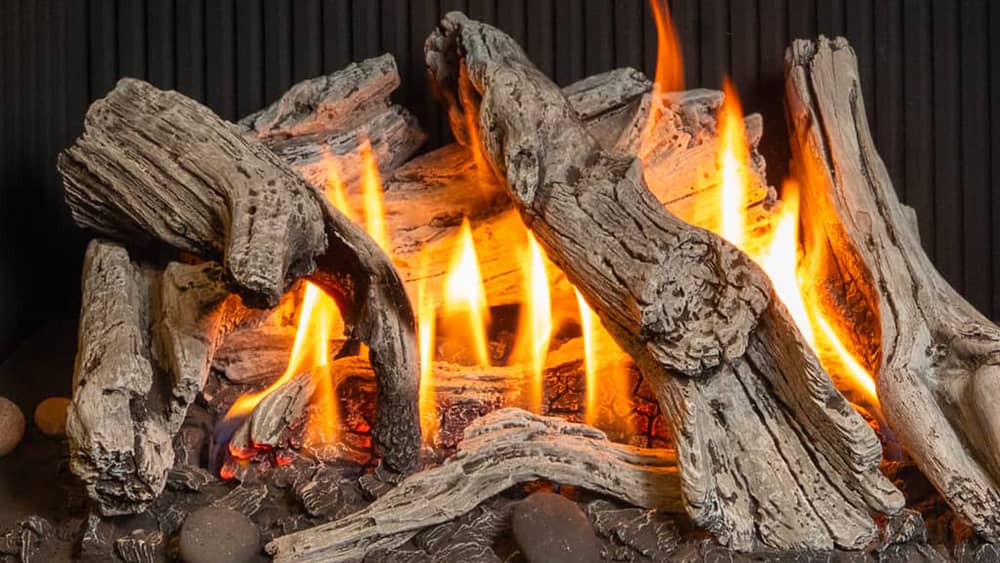
Consider the following material log set options when researching a gas fireplace for your home:
- Ceramic fiber logs are the most affordable and lightweight among the options for fireplace log sets.
- Refractory ceramic gas log sets can last longer due to the high heat rating. They won’t fade over long-term use. They can also be used in vented and ventless fireplaces.
- Refractory cement sets can range in price and tend to look the closest to natural wood, which can be a vital consideration from a style viewpoint. However, refractory cement tends to crack under extremely high heat so these sets may have limited longevity compared to those listed.
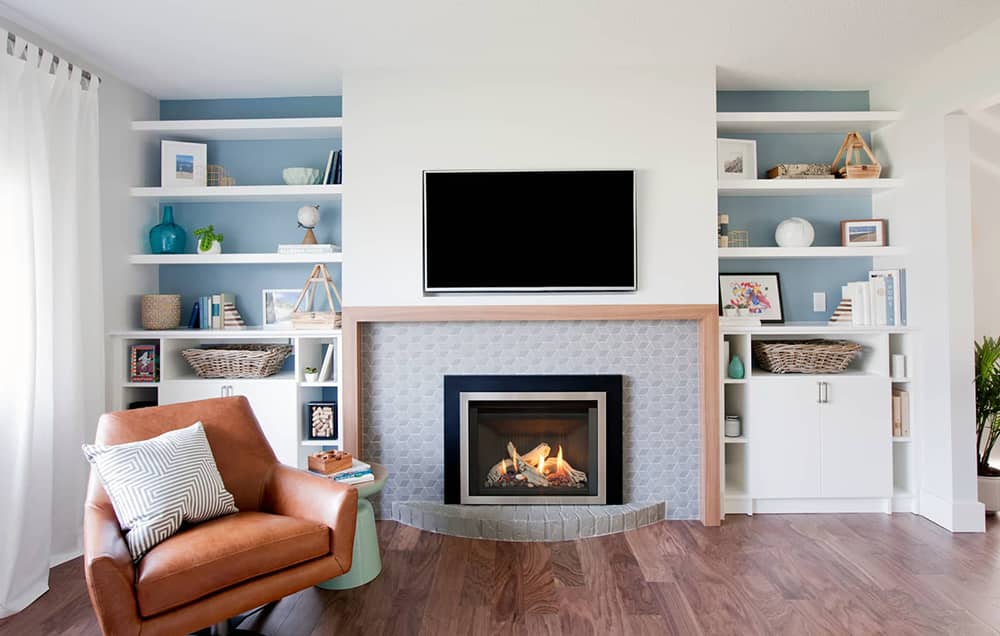
How To Measure The Size of Gas Logs
When measuring your fireplace to see which log set will fit your unit best, consider these measurements to get an accurate picture of what you need.
- First, start by measuring the front width of your gas fireplace.
- Second, measure the width at the back of your gas fireplace.
- Third, measure the depth from the front to the back of your gas fireplace.
- Fourth, measure the height from the top to the bottom of the front of your gas fireplace.
- Fifth, measure the height from the top to the bottom of the back of your gas fireplace.
These measurements will help you narrow down the log types and sizes available for purchase. Please refer to the sizing information in the fireplace manual for a more accurate measurement. Find it through the manufacturer’s website.
It's also a good idea to consult with an authorized fireplace dealer in your area to ensure the logs you choose will be compatible with that specific fireplace.
Videos of Gas Fireplace Logs
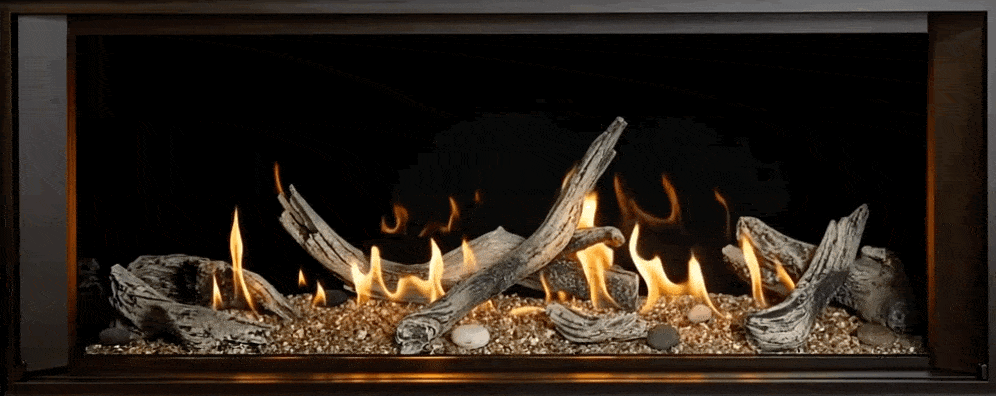
Choosing the right set of gas fireplace logs can elevate both the style and functionality of your fireplace. To help you visualize your options, we've curated a collection of videos that showcase different log styles for Valor gas fireplaces. Each video highlights unique log types, from Birch to Driftwood, so you can see how they look in action and determine which set best complements your home’s design
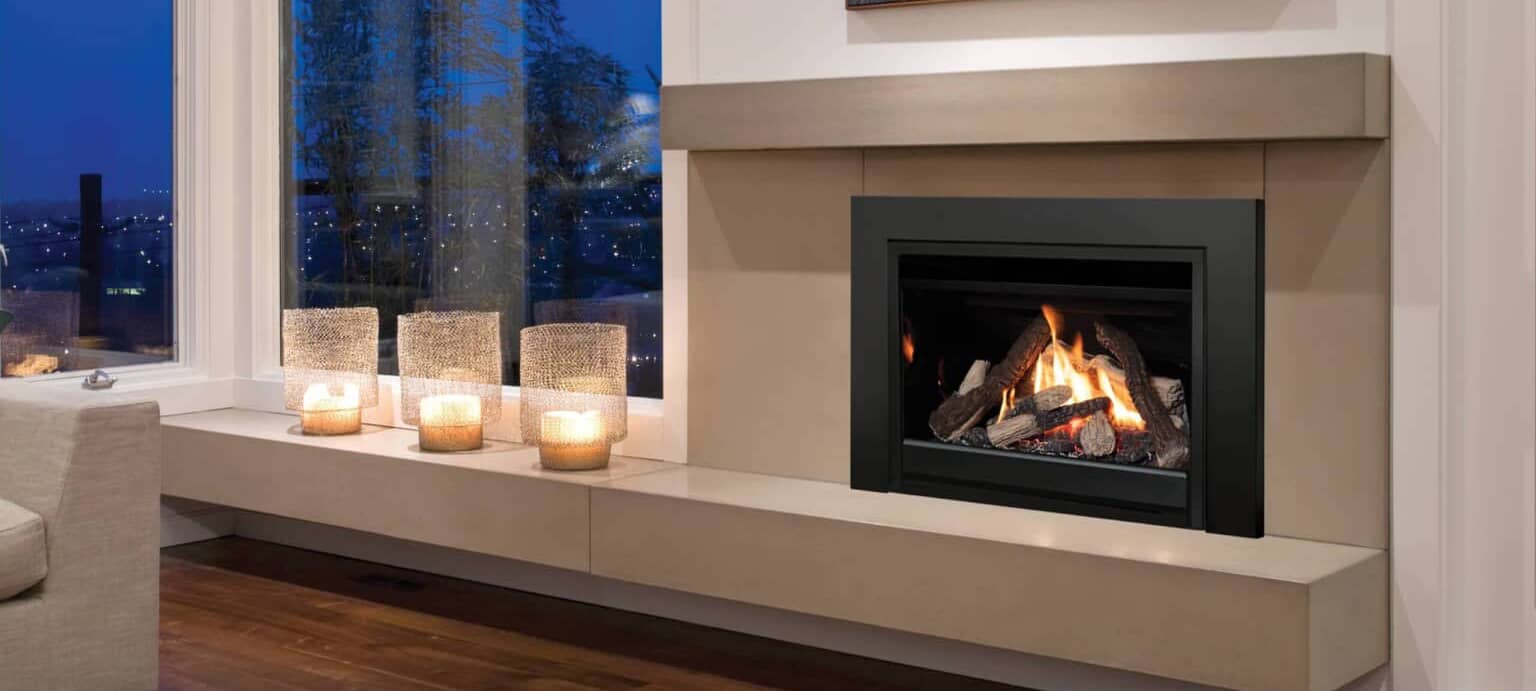
Considering these points above can help you choose the best logs for your fireplace for efficiency and style. These details can help create a cozy and warm atmosphere in your home for years.
Table of Contents


